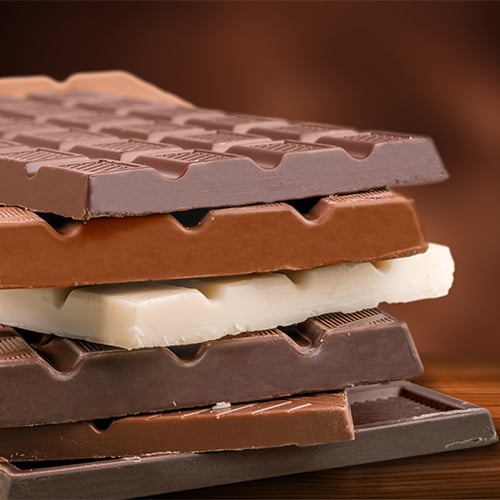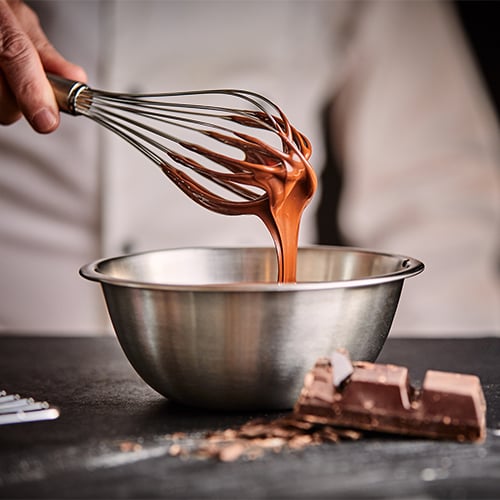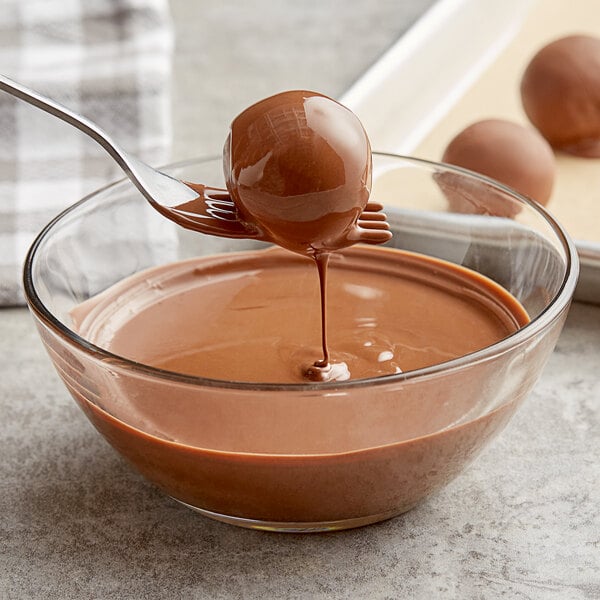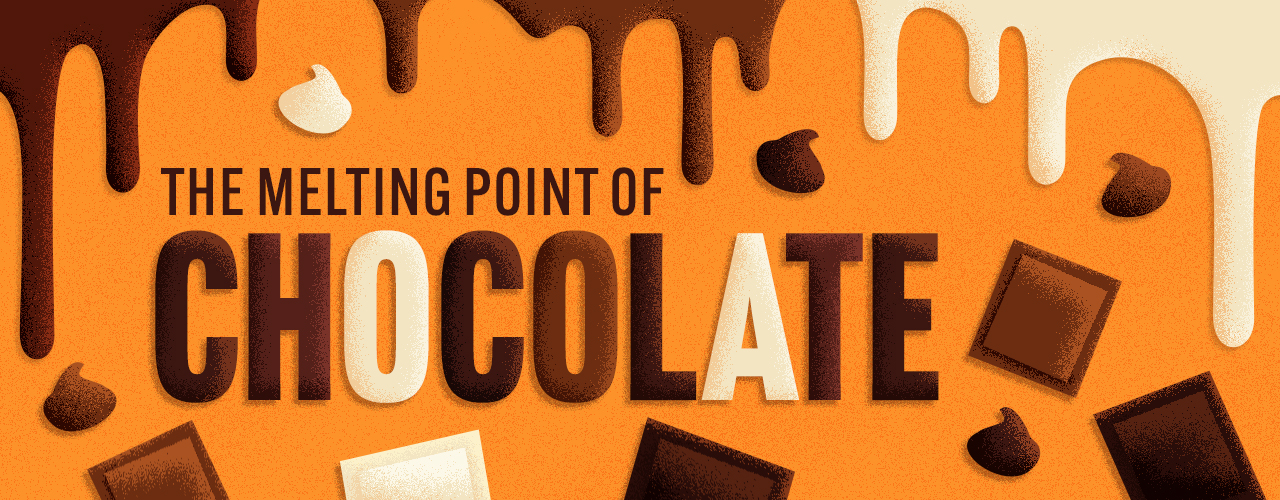Chocolate, with its rich and indulgent flavor, is a beloved ingredient in the culinary world. From decadent desserts to savory sauces, chocolate adds a touch of luxury to a wide range of dishes. However, not all chocolate is created equal when it comes to melting. When melting chocolate, understanding the melt points can help you achieve desired texture and sheen while preventing scorching or seizing. We’ll explore the different melting temperatures of chocolate so you can achieve the desired consistency and texture in your recipes.
What Is the Melting Point of Chocolate?

The melt point of chocolate refers to the temperature at which it transitions from a solid to a liquid state. This characteristic is determined by the cocoa butter content in the chocolate. Cocoa butter, the fat component of chocolate, is responsible for its smooth texture and ability to melt in the mouth. Different types of chocolate have varying amounts of cocoa butter, which directly affects their melt points.
Dark chocolate typically has a higher melt point compared to milk chocolate due to its higher cocoa content. On the other hand, milk chocolate contains more milk solids and sugar, which lowers its melt point, making it more easily melted. White chocolate has no cocoa butter, giving it the lowest melt point. Just like with candy temperatures, it is important to monitor chocolate temperatures closely as you bake.
Dark Chocolate Melting Point
Dark chocolate typically contains the highest cocoa content of the chocolate types, with around 86% or more cocoa solids. This makes it more resistant to melting. It has a melting point ranging from 113 to 120 degrees Fahrenheit (45 to 48 degrees Celsius). This higher melting point makes dark chocolate ideal for applications that require stability at room temperature, such as molded chocolates or chocolate decorations.
Milk Chocolate Melting Point
Milk chocolate has a lower melting point than dark chocolate due to its higher sugar and milk content. It contains approximately 20% to 50% cocoa solids and typically melts between 104 and 115 degrees Fahrenheit (40 to 46 degrees Celsius). This lower melting point makes milk chocolate more suitable for applications where a softer texture is desired, such as chocolate coating for candies or drizzling over desserts.
White Chocolate Melting Point
White chocolate, which contains no cocoa solids but is made from cocoa butter, sugar, and milk solids, has the lowest melting point among the three types of chocolate. It melts at temperatures between 100 and 110 degrees Fahrenheit (38 to 45 degrees Celsius). This low melting point makes white chocolate delicate and more prone to melting. It is a popular choice for baking, ganache, and confectionery fillings.
Why Does Chocolate Melt at Different Rates?

The melting point of chocolate is determined by its crystalline structure. Chocolate contains six different types of chocolate crystals, each with its own melting point. These crystals are formed during the chocolate-making process and can affect how the chocolate behaves when heated. Chocolates with lower melt points are more prone to that ashy-looking blooming which can lead consumers to believe the chocolate has gone bad.
It's important to note that the melting point of chocolate can be influenced by external factors such as humidity and the presence of other ingredients. Humidity can cause chocolate to absorb moisture, resulting in a higher melting point and a grainy texture. The addition of ingredients such as cream or butter can lower the melting point of chocolate, as these ingredients interfere with the cocoa butter's crystalline structure.
Chocolate Crystal Types
There are six different types of chocolate crystals, also known as the polymorphs of chocolate, each with its own unique melting properties.
- Type 1 or Form I: (Melts around 64 degrees Fahrenheit) Soft and noticeable chocolate blooming, produced when melted chocolate is rapidly cooled.
- Type 2 or Form II: (Melts around 74 degrees Fahrenheit) Crumbly texture that melts easily, shows noticeable bloom.
- Type 3 or Form III: (Melts around 78 degrees Fahrenheit) Some firmness, melts easily, shows some blooming, does not ‘snap’.
- Type 4 or Form IV: (Melts around 82 degrees Fahrenheit) Mostly firm, melts easily, dull ‘snap’ and sheen.
- Type 5 or Form V: (Melts around 93 degrees Fahrenheit) Most stable form of chocolate, forms when tempering, smooth and glossy, has a good ‘snap’, melts easily in your mouth.
- Type 6 or Form VI: (Melts around 97 degrees Fahrenheit) Very firm, hard to snap, best for chocolate sculptures.
Understanding the different types of chocolate crystals and their melting properties can help you choose the right type of chocolate for your specific commercial application. Whether you're creating a chocolate coating that needs to withstand warmer temperatures or a creamy ganache with a smooth texture, selecting the appropriate chocolate with the desired crystal form is key to achieving the desired results.
Chocolate Tempering Temperatures

Tempering is a crucial step in working with chocolate, as it ensures that the chocolate sets properly with a glossy appearance and smooth texture. Most chocolates for shipping and retail are tempered to ensure their stability and presentation.
Tempered chocolate is gently melted to a precise temperature and then seeded with a portion of unmelted chocolate to cool it slowly and create those Type V chocolate crystals. It is then heated once more to incorporate the seeded chocolate and stabilize the crystals. Use the following tempering chocolate temperatures for your recipes:
- Dark Chocolate: Melt to 120 degrees Fahrenheit, seed and cool to 86 degrees Fahrenheit, reheat to 89 - 90 degrees Fahrenheit
- Milk Chocolate: Melt to 115 degrees Fahrenheit, seed and cool to 82 degrees Fahrenheit, reheat to 85 - 87 degrees Fahrenheit
- White Chocolate: Melt to 113 degrees Fahrenheit, seed and cool to 79 degrees Fahrenheit, reheat to 82 - 84 degrees Fahrenheit
By understanding the melt points of different types of chocolate, commercial chefs and bakers can make informed decisions about which chocolate to use for specific applications. So if you own a candy store and are tempering chocolate for molding, creating ganache for truffles, or making a decadent chocolate sauce, knowing the melt point of your chocolate will ensure that you achieve the desired results.



